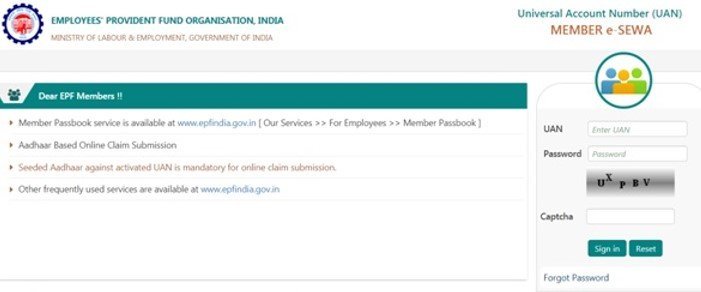At the end of an accounting period, businesses perform a critical task called closing the books. This process involves making closing entries to reset certain accounts for the next period. Understanding which accounts end up with a zero balance is fundamental for accurate financial reporting. These entries ensure that your income statement reflects performance for a specific period only, providing a clean slate for the future.
What are Closing Entries and Why do They Matter?
Closing entries are journal entries made at the end of an accounting cycle. Their main purpose is to transfer the balances from temporary accounts to a permanent equity account, specifically Retained Earnings. Think of it as a financial reset button that prepares your books for the new year or quarter.
This process is not just about tidying up; it’s essential for maintaining the integrity of your financial data. Without closing entries, the income and expenses from the previous period would incorrectly carry over into the next one. This would distort your financial statements, making it impossible to accurately measure your business’s performance over a specific timeframe.
By resetting these accounts, you can generate a precise income statement that shows your profit or loss for that period alone. This accuracy is vital for making informed business decisions, securing loans, and satisfying investors.
Temporary vs. Permanent Accounts: The Key Difference
To understand closing entries, you must first know the difference between temporary and permanent accounts. Their names give a big clue about how they are treated at the end of an accounting period.
Temporary accounts, also known as nominal accounts, track financial activity over a limited period. These include all your revenue, expense, and dividend accounts. Their job is to help you calculate net income for one period, and once that’s done, they need to be cleared out.
Permanent accounts, or real accounts, are not closed. Their balances carry forward from one period to the next, tracking the long-term financial health of the business. These are your asset, liability, and equity accounts found on the balance sheet.
| Account Type | Description | Treatment at Period End |
| Temporary Accounts | Includes revenues, expenses, and dividends. Tracks activity for one period. | Balance is transferred and reset to zero. |
| Permanent Accounts | Includes assets, liabilities, and equity. Tracks long-term financial position. | Balance carries forward to the next period. |
Which Specific Accounts are Reset to Zero?
The direct answer to the main question is that all temporary accounts will have a zero balance after closing entries are journalized and posted. This is the entire point of the closing process.
These accounts are closed by transferring their balances to a temporary clearing account called the Income Summary account. From there, the net balance (profit or loss) is moved to Retained Earnings.
The specific accounts that are reset to zero include:
- Revenue Accounts: All accounts that track income, such as Sales Revenue, Service Revenue, and Interest Income, are closed.
- Expense Accounts: Every account representing a cost, like Salaries Expense, Rent Expense, and Utilities Expense, is brought to zero.
- Dividends Account: This account, which tracks payments to shareholders, is also a temporary account and is closed directly to Retained Earnings.
After this process, only permanent accounts like Cash, Accounts Receivable, Equipment, Accounts Payable, and Retained Earnings will have balances.
A Step-by-Step Look at the Closing Process
The closing process is a systematic procedure that ensures all temporary accounts are properly zeroed out. While software automates much of this today, understanding the manual steps is crucial for any business owner or accountant.
The process generally involves four key journal entries:
- Close Revenue Accounts: Debit each revenue account for its balance and credit the total amount to the Income Summary account. This brings all revenue accounts to zero.
- Close Expense Accounts: Credit each expense account for its balance and debit the total amount to the Income Summary account. This clears out all expense accounts.
- Close the Income Summary Account: After the first two steps, the balance in Income Summary represents the net income or loss. This balance is then transferred to the Retained Earnings account. A debit is required for a net loss, and a credit for a net income.
- Close the Dividends Account: Debit Retained Earnings and credit the Dividends account for its balance. This reduces retained earnings by the amount paid to shareholders and zeroes out the Dividends account.
Once these entries are journalized, they must be posted to the general ledger. This final step officially updates each account, reflecting the zero balances in all temporary accounts and the updated balance in Retained Earnings.
How do Zero Balances Impact Financial Statements?
The impact of zero-balance accounts on your financial statements is significant and positive. It ensures clarity and accuracy in your financial reporting. By zeroing out revenues and expenses, your Income Statement for the new period starts fresh.
This separation is critical for comparing performance across different periods. For example, you can accurately compare your revenue in January of this year to January of last year because neither figure is contaminated with data from other months.
Furthermore, this process consolidates the period’s net income or loss into the Retained Earnings account on the Balance Sheet. This provides a clear, cumulative picture of the company’s profitability over its lifetime, which is a key metric for investors and lenders.
Common Mistakes to Avoid with Closing Entries
While the process is logical, errors can happen, leading to inaccurate financial statements. One of the most common mistakes is misclassifying accounts. Forgetting to close a temporary account or attempting to close a permanent account can throw off your entire balance sheet.
Another frequent error occurs during journalizing. Incorrectly debiting or crediting an account can distort your net income calculation and the final balance in Retained Earnings. It is crucial to double-check every closing entry before posting it to the ledger.
Failing to close the Dividends account is also a common oversight. Since dividends are not an expense and don’t appear on the income statement, some forget that they are a temporary account that must be closed directly to Retained Earnings.
Frequently Asked Questions
Which accounts have a zero balance after closing?
After closing entries are completed, all temporary accounts will have a zero balance. This includes all revenue accounts, all expense accounts, and the dividends account. These accounts are reset to prepare for the next accounting period.
Why aren’t asset and liability accounts closed?
Asset and liability accounts are permanent accounts, meaning their balances are cumulative and carry over from one period to the next. They represent the long-term financial position of a company and are not reset.
What is the purpose of the Income Summary account?
The Income Summary account is a temporary clearing account used only during the closing process. It simplifies the procedure by first summarizing all revenues and expenses to calculate the net income or loss before transferring that single amount to Retained Earnings.
How often should a business perform closing entries?
Businesses typically perform closing entries at the end of their accounting year. However, some companies may choose to close their books on a quarterly or monthly basis to facilitate more frequent and detailed financial analysis.
What happens if I forget to make closing entries?
Forgetting to make closing entries means your revenue, expense, and dividend balances will carry over into the next period. This will make your financial statements for the new period inaccurate, as they will mix old and new data, making it impossible to assess performance correctly.








Leave a Comment